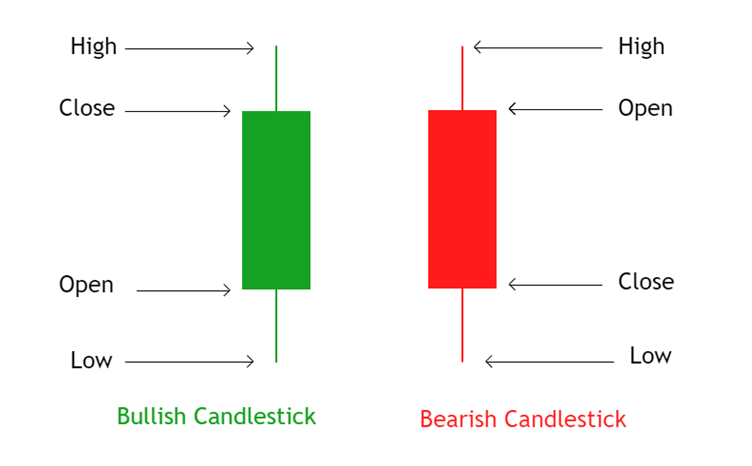When it comes to analyzing the stock market, one of the most popular and widely used tools is the candlestick charts. Candlestick charts are a type of financial chart used to represent the price movements of securities, derivatives, or currencies over time. They are particularly useful for traders and investors who want to understand market sentiment and make informed decisions about buying or selling assets.
In this article, we will explore what candlesticks are, how they are constructed, and how they can be used to analyze stock market trends. By the end of this article, you should have a solid understanding of candlesticks and how to interpret them.
What Are Candlesticks?
Candlesticks originated in Japan in the 18th century and were used by rice traders to track market prices and daily momentum. The technique was later introduced to the Western world by Steve Nison in his book “Japanese Candlestick Charting Techniques.” Today, candlesticks are used by traders and investors worldwide to analyze price movements in various financial markets.
A candlestick is a type of price chart that displays the high, low, open, and closing prices of a security for a specific period. Each candlestick represents a single time period, such as a day, week, or hour, depending on the chart’s time frame. The candlestick’s body and wicks (or shadows) provide valuable information about the price action during that period.
Anatomy of a Candlestick
To understand how to read a candlestick chart, it’s essential to know the different parts of a candlestick:

- Body: The body of the candlestick represents the range between the opening and closing prices during the time period. If the closing price is higher than the opening price, the body is typically filled or colored (often green or white). This indicates a bullish (positive) price movement. If the closing price is lower than the opening price, the body is usually hollow or colored (often red or black), indicating a bearish (negative) price movement.
- Wicks (or Shadows): The wicks are the thin lines that extend above and below the body of the candlestick. The upper wick represents the highest price reached during the time, while the lower wick represents the lowest price. The length of the wicks can provide insights into the volatility and price range during the period.
- Open Price: The open price is the price at which the security started trading during the time period. It is represented by the top of the body (for a bearish candlestick) or the bottom of the body (for a bullish candlestick).
- Close Price: The close price is the price at which the security ended trading during the time period. It is represented by the bottom of the body (for a bearish candlestick) or the top of the body (for a bullish candlestick).
- High Price: The high price is the highest price reached during the time period and is represented by the top of the upper wick.
- Low Price: The low price is the lowest price reached during the time period and is represented by the bottom of the lower wick.
How to Read a Candlestick Chart
Now that we understand the anatomy of a candlestick, let’s explore how to read candlestick charts. A candlestick chart consists of multiple candlesticks, each representing a specific time period. By analyzing the patterns formed by these candlesticks, traders can gain insights into market sentiment and potential price movements.
1. Single Candlestick Patterns
Single candlestick patterns are formed by just one candlestick and can provide quick insights into market sentiment. Some common single candlestick patterns include:
- Bullish Engulfing Pattern: This pattern occurs when a small bearish candlestick is followed by a larger bullish candlestick that completely engulfs the previous candlestick. It indicates a potential reversal from a bearish to a bullish trend.
- Bearish Engulfing Pattern: This pattern is the opposite of the bullish engulfing pattern. It occurs when a small bullish candlestick is followed by a larger bearish candlestick that completely engulfs the previous candlestick. It indicates a potential reversal from a bullish to a bearish trend.
- Hammer: A hammer is a bullish reversal pattern that forms after a downtrend. It has a small body and a long lower wick, indicating that sellers pushed the price down, but buyers were able to push it back up, closing near the open.
- Shooting Star: A shooting star is a bearish reversal pattern that forms after an uptrend. It has a small body and a long upper wick, indicating that buyers pushed the price up, but sellers were able to push it back down, closing near the open.
2. Multiple Candlestick Patterns
Multiple candlestick patterns are formed by two or more candlesticks and can provide more reliable signals about potential price movements. Some common multiple candlestick patterns include:
- Morning Star: The morning star is a bullish reversal pattern that consists of three candlesticks. The first candlestick is a long bearish candlestick, the second is a small-bodied candlestick (often a doji) that gaps down, and the third is a long bullish candlestick that gaps up. It indicates a potential reversal from a bearish to a bullish trend.
- Evening Star: The evening star is a bearish reversal pattern that consists of three candlesticks. The first candlestick is a long bullish candlestick, the second is a small-bodied candlestick (often a doji) that gaps up, and the third is a long bearish candlestick that gaps down. It indicates a potential reversal from a bullish to a bearish trend.
- Three White Soldiers: The three white soldiers is a bullish continuation pattern that consists of three long bullish candlesticks with small wicks. Each candlestick opens within the body of the previous candlestick and closes higher than the previous candlestick. It indicates strong buying pressure and a potential continuation of the bullish trend.
- Three Black Crows: The three black crows is a bearish continuation pattern that consists of three long bearish candlesticks with small wicks. Each candlestick opens within the body of the previous candlestick and closes lower than the previous candlestick. It indicates strong selling pressure and a potential continuation of the bearish trend.
3. Trend Analysis
Candlestick charts are also useful for identifying trends in the market. A trend is the general direction in which the price of a security is moving. There are three types of trends:
- Uptrend: An uptrend is characterized by a series of higher highs and higher lows. In an uptrend, bullish candlesticks dominate, and the overall sentiment is positive. Traders may look for buying opportunities during an uptrend.
- Downtrend: A downtrend is characterized by a series of lower highs and lower lows. In a downtrend, bearish candlesticks dominate, and the overall sentiment is negative. Traders may look for selling opportunities during a downtrend.
- Sideways (or Range-bound) Trend: A sideways trend occurs when the price moves within a horizontal range, with no clear direction. In a sideways trend, both bullish and bearish candlesticks may appear, and the overall sentiment is neutral. Traders may look for range-bound strategies, such as buying at support levels and selling at resistance levels.
4. Support and Resistance Levels
Support and resistance levels are key concepts in technical analysis and are often identified using candlestick charts. Support is a price level where buying pressure is strong enough to prevent the price from falling further, while resistance is a price level where selling pressure is strong enough to prevent the price from rising further.
- Support Level: A support level is identified by a price level where the price has historically found buying interest and reversed direction. On a candlestick chart, support levels are often marked by long lower wicks or bullish reversal patterns, such as hammers or bullish engulfing patterns.
- Resistance Level: A resistance level is identified by a price level where the price has historically found selling interest and reversed direction. On a candlestick chart, resistance levels are often marked by long upper wicks or bearish reversal patterns, such as shooting stars or bearish engulfing patterns.
5. Volume Analysis
Volume is an important indicator that can be used in conjunction with candlestick charts to confirm price movements. Volume represents the number of shares or contracts traded during a specific time period. High volume during a price movement indicates strong interest and can confirm the validity of the price movement, while low volume may indicate weak interest and a potential reversal.
- Volume Confirmation: When a bullish candlestick pattern forms with high volume, it indicates strong buying interest and increases the likelihood of a continued upward movement. Conversely, when a bearish candlestick pattern forms with high volume, it indicates strong selling interest and increases the likelihood of a continued downward movement.
- Volume Divergence: When a price movement occurs with low volume, it may indicate a lack of interest and a potential reversal. For example, if the price is rising but volume is decreasing, it may suggest that the upward movement is losing momentum and could reverse.
Conclusion
Candlesticks are a powerful tool for analyzing price movements in the stock market. By understanding the anatomy of a candlestick and how to interpret candlestick charts, traders and investors can gain valuable insights into market sentiment and make informed decisions about buying or selling assets. Whether you’re a beginner or an experienced trader, mastering the art of reading candlestick charts can significantly enhance your ability to navigate the complexities of the stock market.

